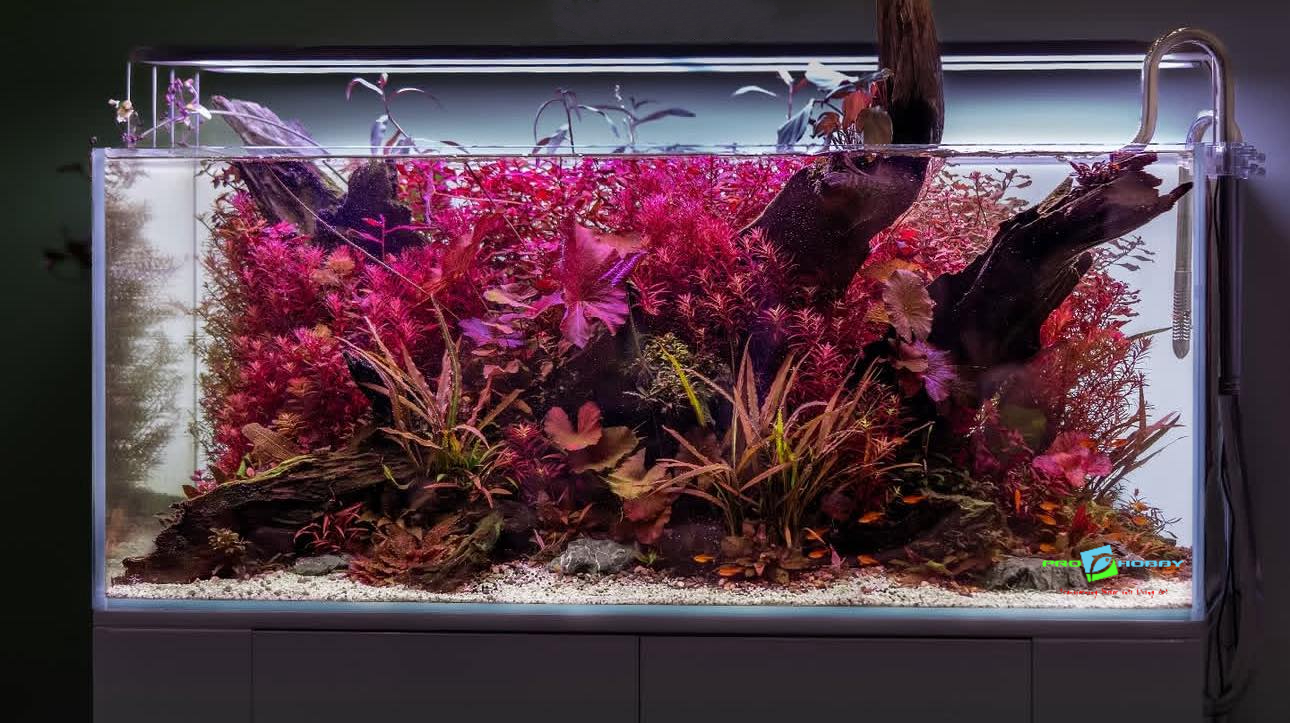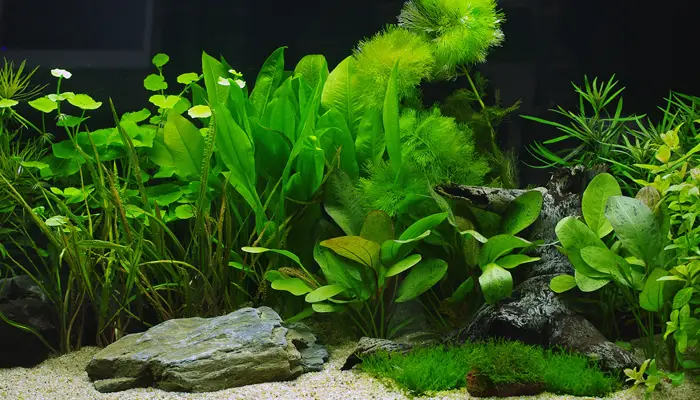By ProHobby™ | Delhi NCR’s Expert Aquarium Solutions
📍 Plot No. 154, Nanda Enclave, Gali No. 2, Ch Nanda Singh Marg, Ambarhai, Sector 19, Dwarka, New Delhi 110075
📞 8130316186
🌐 www.prohobby.in
🌿 Introduction
Every aquascape begins with a silent but vital player — the substrate.
While light and fertilizers control the visible parts of plant metabolism, the substrate governs what happens underground: nutrient ion exchange, root respiration, and microbial mineralization.
At ProHobby™, years of designing planted, marine, and biotope systems in Delhi NCR have shown one constant – substrate chemistry determines long-term system success. A tank with poor substrate architecture may initially look fine but will inevitably collapse in stability — manifesting as nutrient imbalances, algae blooms, or stunted root growth.
This guide explores substrate dynamics not just as “soil,” but as a living chemical reactor supporting root–microbe–water interactions.
⚗️ Substrate as a Biochemical Interface
A well-designed substrate performs three simultaneous functions:
- Ion Exchange Reservoir
Substrates with high Cation Exchange Capacity (CEC) store and release ions like K⁺, Mg²⁺, and NH₄⁺. Clay minerals (montmorillonite, illite) and laterite soils typically exhibit CEC values between 15–40 meq/100g, enabling consistent nutrient buffering.
→ When the water column concentration drops, these sites desorb ions, maintaining equilibrium via the Donnan effect. - Microbial Reactor
The top 2–4 cm of active substrate functions as an oxygen gradient zone, where aerobic bacteria perform nitrification (NH₄⁺ → NO₂⁻ → NO₃⁻).
Deeper, mildly anoxic zones allow denitrification, reducing nitrates back to N₂ gas — a natural nitrate sink. - Chemical Buffer System
Organic acids and humic substances from active soils reduce pH drift by binding carbonate ions (HCO₃⁻), helping maintain pH 6.2–6.8 in planted aquariums — ideal for iron and micronutrient solubility.
🧱 Substrate Classifications — Technical Overview
🪨 1. Inert Substrates
Examples: Quartz gravel, basalt chips, silica sand, aragonite.
- Chemical Reactivity: None (CEC ≈ 0 meq/100g).
- Hydraulic Porosity: ~35–40%.
- Impact on System: Does not alter KH/GH or nutrient levels.
- Best Application: For epiphyte-dominant scapes, brackish, or marine systems where nutrient delivery occurs entirely via the water column.
🌱 2. Active Mineralized Soils
Examples: ADA Amazonia, Tropica Soil, Fluval Bio-Stratum, ProHobby™ Advanced BioActive Substrate.
- Composition: Baked volcanic ash, laterite, and humic complexes.
- CEC: Typically 25–50 meq/100g.
- Function: Adsorbs NH₄⁺, Fe²⁺, K⁺, releasing gradually.
- pH Buffering: Tends to stabilize around 6.0–6.8.
- Note: Initial ammonia leaching (0.5–2 ppm) may occur for 1–3 weeks; cycling and bacterial colonization mitigate this.
🧪 3. Layered / Hybrid Systems
Custom setups that combine an inert foundation (e.g., pumice or gravel, 3–5 cm) with a nutrient-rich core (laterite or soil, 2–3 cm) and a decorative cap (fine sand, 1 cm).
- Advantages: Excellent root aeration and customizable chemistry.
- Risks: Improper layering can lead to anoxic hydrogen sulfide (H₂S) zones — avoid compaction and maintain sufficient vertical diffusion.
🌾 Root–Substrate–Water Interactions
Plant roots exude organic acids (citric, malic, oxalic) that dissolve bound minerals, mobilizing Fe²⁺, Mn²⁺, and PO₄³⁻. This rhizosphere chemistry drives localized pH drops of 0.2–0.5 units, which improve micronutrient uptake.
Root Zone Parameters (Ideal Ranges):
| Factor | Optimal Range | Function |
|---|---|---|
| pH | 6.2–6.8 | Iron and phosphate solubility |
| Redox Potential (Eh) | +200 to +400 mV | Balanced nitrification |
| Dissolved Oxygen | 2–4 mg/L (root zone) | Prevents anaerobic rot |
| CO₂ Gradient | 10–30 mg/L | Enhances carbonic buffering near roots |
🧫 Microbial & Redox Dynamics
A stable substrate supports both aerobic (nitrifying) and facultative anaerobic (denitrifying) microbes:
- Nitrosomonas spp.: NH₄⁺ → NO₂⁻
- Nitrobacter spp.: NO₂⁻ → NO₃⁻
- Paracoccus spp. / Pseudomonas spp.: NO₃⁻ → N₂
Additionally, iron-reducing bacteria help maintain Fe²⁺ availability for plant roots by reducing ferric (Fe³⁺) precipitates under micro-anaerobic conditions.
The key is balanced oxygenation — achieved via gentle water circulation, not deep vacuuming.
💧 Substrate–Water Chemistry in Delhi NCR
Delhi NCR water averages pH 7.6–8.0, GH 10–15 dGH, KH 6–10 dKH, dominated by calcium carbonate. This impacts:
- CO₂ Solubility: Reduced at higher pH; CO₂ reactors are more effective than diffusers here.
- Iron Chelation: Fe²⁺ rapidly oxidizes; Chelated Fe (stable up to pH 9) or substrate-based iron sources are essential.
- Substrate Exhaustion: Active soils in such alkaline water typically last 18–24 months before losing their buffering potential.
ProHobby™ Solution:
Our substrate rejuvenation process uses Re-Bio Mix, a mineral–microbial recharging pack that restores CEC and organic acid buffering without full soil replacement.
⚙️ Quantitative Design Guidelines
| Parameter | Recommended Range | Notes |
|---|---|---|
| Substrate Depth | 5–8 cm | Deeper beds favor rooted species |
| Grain Size | 0.5–2 mm | Ensures root anchoring + diffusion |
| Porosity | 35–45% | Ideal for oxygen penetration |
| DOC (Dissolved Organic Carbon) | < 5 mg/L | Prevents anoxia |
| NH₄⁺ Adsorption | 20–50 mg/kg | Higher = better cycling capacity |
🌍 Sustainability Considerations
Ethical aquascaping begins at the substrate level. Hence, ProHobby™ encourages:
- Local sourcing of clay minerals and volcanic rock to minimize environmental footprint.
- Avoiding coral-derived sands that disrupt marine ecosystems.
- Re-mineralizing and re-seeding old substrates with beneficial bacteria instead of full disposal.
🔗 Related Reading
💡 Continue Your Learning:
Nutrients, CO₂ & Algae — The Balancing Act Behind Thriving Planted Aquariums →
Understand how substrate chemistry, nutrient dosing, and CO₂ diffusion interact in complete system equilibrium.
🏁 Conclusion
A planted tank’s long-term success depends as much on substrate chemistry as on lighting or CO₂. Beneath the visible scape lies a complex interplay of ion exchange, microbial respiration, and carbonic buffering — the quiet foundation of aquatic stability.
At ProHobby™, we engineer substrate systems based on local water chemistry, plant species, and bioload — ensuring both beauty and biological precision.
#prohobby #plantedtankscience #aquariumsubstrate #aquariumsoil #aquascapingindia #delhiaquarium #advancedaquascaping #aquariumchemistry #CEC #aquariumsetup #aquariumwaterchemistry #fishkeepingindia #aquariumsupplies #ncrhobbyists #substratebiology


